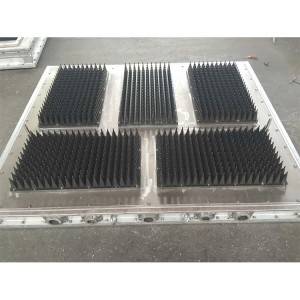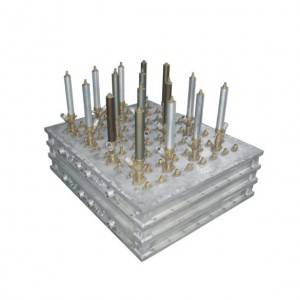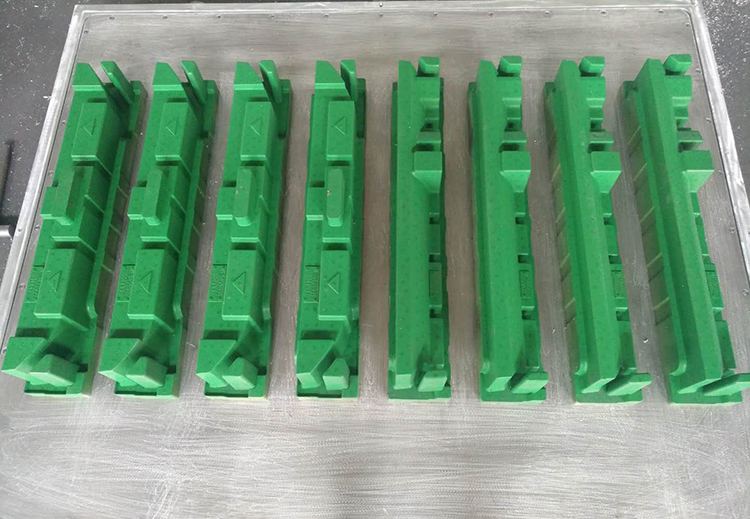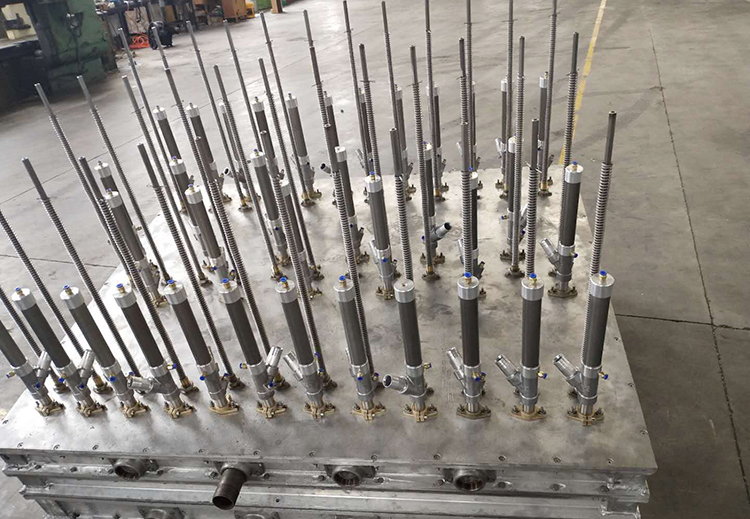Manufacturer of Polyfoam Tool for EPS Applications
Product Main Parameters
| Feature | Description |
|---|---|
| Material Modeling | Advanced microstructure modeling capabilities |
| Simulation | Utilizes FEA and CFD for accurate behavior predictions |
| Optimization | Optimizes design parameters for cost and quality improvements |
| User Interface | User-friendly interface with CAD/CAE integration |
Common Product Specifications
| Specification | Details |
|---|---|
| Simulation Engine | FEA, CFD |
| Modeling Inputs | Cell size, density, composition |
| Integration | Compatible with various CAD/CAE systems |
Product Manufacturing Process
The manufacturing process of the Polyfoam Tool involves a systematic integration of software development and material science. Starting with the identification of industry requirements, the process includes the engineering of advanced algorithms for material modeling, simulation, and optimization. Key milestones in the development process are iterative testing and validation phases, ensuring that the software meets the rigorous standards of diverse industrial applications such as automotive and aerospace. The final product is subjected to extensive usability testing, focusing on integration capabilities with existing engineering tools. This comprehensive development approach results in a robust tool that not only meets but exceeds user expectations, supporting innovative designs and sustainable practices in foamed material applications.
Product Application Scenarios
The Polyfoam Tool is pivotal in optimizing foamed materials for a myriad of industries. In the automotive sector, it aids in designing components that balance safety with weight efficiency, crucial for crash protection systems. The tool's simulation capabilities are equally beneficial in construction, where it helps design energy-efficient insulation materials that also offer fire resistance. The aerospace industry benefits from the tool's ability to optimize lightweight yet durable components, essential for managing extreme conditions. These diverse applications underscore the tool's versatility, empowering manufacturers to develop innovative, cost-effective solutions while minimizing environmental impact through precise material use.
Product After-Sales Service
Our commitment as a manufacturer extends beyond the sale of the Polyfoam Tool, with comprehensive after-sales support. Clients have access to a dedicated technical support team, available to resolve any software-related queries or issues. Regular updates are provided to ensure the tool remains aligned with the latest industry innovations and standards. Additionally, customized training sessions are offered to enhance user proficiency and to maximize the tool's capabilities. This service ensures that clients can fully utilize the Polyfoam Tool, advancing their manufacturing needs and staying competitive in their respective fields.
Product Transportation
The Polyfoam Tool, being a software product, is primarily distributed digitally, facilitating immediate access for users worldwide. Upon purchase, clients receive secure login credentials to download the software from our server, accompanied by detailed installation instructions and user manuals. For clients preferring a physical medium, we also offer the software on portable devices, delivered through reliable courier services with tracking options. Our approach ensures swift, safe, and efficient delivery, supporting seamless integration into clients' operational environments.
Product Advantages
- Cost Efficiency: Reduces need for physical prototypes, cutting material and production costs.
- Innovation Facilitation: Enables exploration of new materials and configurations.
- Environmental Impact: Minimizes waste through optimized material use.
Product FAQ
- What industries benefit most from the Polyfoam Tool?
The Polyfoam Tool is beneficial in industries like automotive, aerospace, construction, and packaging, where foamed materials are crucial for design and efficiency. Its simulation and optimization capabilities support product development by enhancing safety, performance, and material use.
- How does the manufacturer support clients in using the Polyfoam Tool?
Dongshen offers extensive after-sales support, including technical assistance, regular updates, and customized training sessions. These services ensure clients can fully utilize the tool's capabilities and improve their production processes effectively.
- Can the Polyfoam Tool be integrated with existing CAD/CAE systems?
Yes, the Polyfoam Tool is designed for seamless integration with various CAD and CAE systems, ensuring a smooth data exchange and workflow within clients' existing infrastructure. This compatibility enhances its versatility and ease of use.
- What are the primary benefits of using advanced simulation features in the Polyfoam Tool?
The simulation features allow accurate predictions of foam behavior under stress, impact, and thermal conditions. This precision supports optimizing designs for enhanced performance, safety, and materials efficiency, leading to innovative and cost-effective solutions.
- How does the Polyfoam Tool contribute to reducing environmental impact?
By optimizing material use and reducing waste, the Polyfoam Tool supports sustainable manufacturing practices. Its advanced simulation and optimization capabilities minimize the need for prototypes, further decreasing the environmental footprint.
- What is the typical learning curve for new users of the Polyfoam Tool?
The learning curve varies depending on users' familiarity with material science and simulation techniques. However, the tool's user-friendly interface and comprehensive training resources provided by the manufacturer facilitate a smooth transition and effective utilization.
- What types of materials can the Polyfoam Tool model and simulate?
The Polyfoam Tool is engineered to model and simulate a wide range of foamed materials, characterized by their cellular structure. This includes various formulations used in sectors such as automotive, aerospace, construction, and packaging, enhancing their application versatility.
- How does the Polyfoam Tool assist in cost optimization?
By enabling precise material modeling and simulation, the Polyfoam Tool helps minimize material usage and energy consumption. This efficiency contributes to reduced production costs, making it a valuable asset for manufacturers aiming for cost-effective operations.
- Is there ongoing support for software updates and new features?
Dongshen ensures continuous support through regular software updates, incorporating the latest advancements and features. Clients are kept informed of these updates to maintain the tool's relevance and utility in ever-evolving industrial applications.
- How are user feedback and industry needs incorporated into the Polyfoam Tool's development?
The tool's development is guided by feedback from users and emerging industry requirements. This input is crucial for the manufacturer to refine existing features and develop new ones, ensuring the Polyfoam Tool remains at the forefront of material simulation and optimization.
Product Hot Topics
- Discussing the Role of Polyfoam Tool in Automotive Industry Innovation
The automotive industry is constantly evolving, with manufacturers seeking innovative solutions to enhance vehicle safety and efficiency. The Polyfoam Tool plays a critical role in this evolution, offering advanced simulation capabilities that allow engineers to design foamed materials that meet rigorous standards. By optimizing energy absorption characteristics and reducing weight without sacrificing safety, the tool helps manufacturers push the boundaries of vehicle design and performance.
- Exploring How Polyfoam Tool Drives Sustainability in Construction
Sustainability is a major focus in construction, where the need for energy-efficient and environmentally friendly materials is paramount. The Polyfoam Tool supports this endeavor by enabling the development of advanced insulation solutions with minimal environmental impact. By precisely modeling and optimizing foam properties, the tool helps manufacturers produce materials that conserve energy, offering significant long-term cost savings and environmental benefits.
- The Impact of Polyfoam Tool on Aerospace Material Design
In aerospace, the demand for lightweight yet robust materials is ever-growing, as manufacturers strive to improve fuel efficiency and performance. The Polyfoam Tool addresses this challenge by allowing precise material simulation and optimization, catering to the industry's specific needs. By offering insights into material behavior under extreme conditions, the tool assists engineers in crafting components that deliver both reliability and performance, driving innovation in aerospace engineering.
- Understanding Polyfoam Tool's Advantages in Packaging Solutions
Efficient packaging designs are essential for product protection and cost management. The Polyfoam Tool empowers manufacturers to simulate and optimize foam materials used in packaging, ensuring that products are well-protected during transit. By minimizing material usage while enhancing protective qualities, the tool aids in creating cost-effective and sustainable packaging solutions, addressing both economic and environmental concerns.
- How Polyfoam Tool Facilitates Material Innovation Across Industries
Material innovation is key to advancing technologies, and the Polyfoam Tool is at the forefront of this evolution. By offering unmatched simulation and optimization capabilities, the tool enables designers to explore new material configurations that were previously unfeasible. This technological leap opens new possibilities across industries, from automotive and aerospace to construction and beyond, setting new standards for material performance and sustainability.
- Challenges and Opportunities in Utilizing Polyfoam Tool for Energy Efficiency
The drive for energy efficiency presents both challenges and opportunities for manufacturers using the Polyfoam Tool. On one hand, the tool's capabilities allow precise material optimization to achieve energy-efficient designs, reducing overall consumption. On the other hand, leveraging these capabilities requires a deep understanding of material science and engineering principles. Addressing these challenges enables manufacturers to remain competitive and sustainable, fully capitalizing on the tool's potential.
- The Future of Foamed Materials and the Role of Polyfoam Tool
As industries prioritize sustainability and efficiency, the future of foamed materials looks promising, with the Polyfoam Tool playing a pivotal role. Its advanced modeling and simulation capabilities not only support current demands but also anticipate future needs, paving the way for transformative innovations. The tool's ability to seamlessly integrate into existing workflows further solidifies its importance in driving the evolution of foamed material applications across various sectors.
- Polyfoam Tool's Contribution to Reducing Environmental Footprint
Environmental sustainability is a critical concern for modern manufacturers, and the Polyfoam Tool contributes significantly to this goal. By optimizing material use and minimizing waste, the tool directly impacts manufacturers' environmental footprints. This contribution is particularly valuable in industries heavily reliant on foamed materials, where resource efficiency translates into both ecological and economic benefits, supporting global sustainability efforts.
- Examining the Integration of Polyfoam Tool with Advanced Manufacturing Techniques
The integration of the Polyfoam Tool with advanced manufacturing techniques holds immense potential for improving product quality and efficiency. By aligning with technologies such as additive manufacturing and smart factory systems, the tool enhances material precision and production speed. This integration fosters a more agile manufacturing environment, where manufacturers can quickly adapt to changing demands while maintaining high standards of quality and innovation.
- The Role of Polyfoam Tool in Enhancing Product Safety Standards
Product safety is non-negotiable in industries like automotive and aerospace, where the Polyfoam Tool plays an essential role. By allowing detailed simulations of material behavior under various conditions, the tool helps manufacturers design safer components. These capabilities ensure that safety standards are not only met but often exceeded, providing peace of mind for both manufacturers and end-users. The tool's contribution to product safety reinforces its value as an indispensable asset in modern manufacturing.
Image Description
There is no picture description for this product





